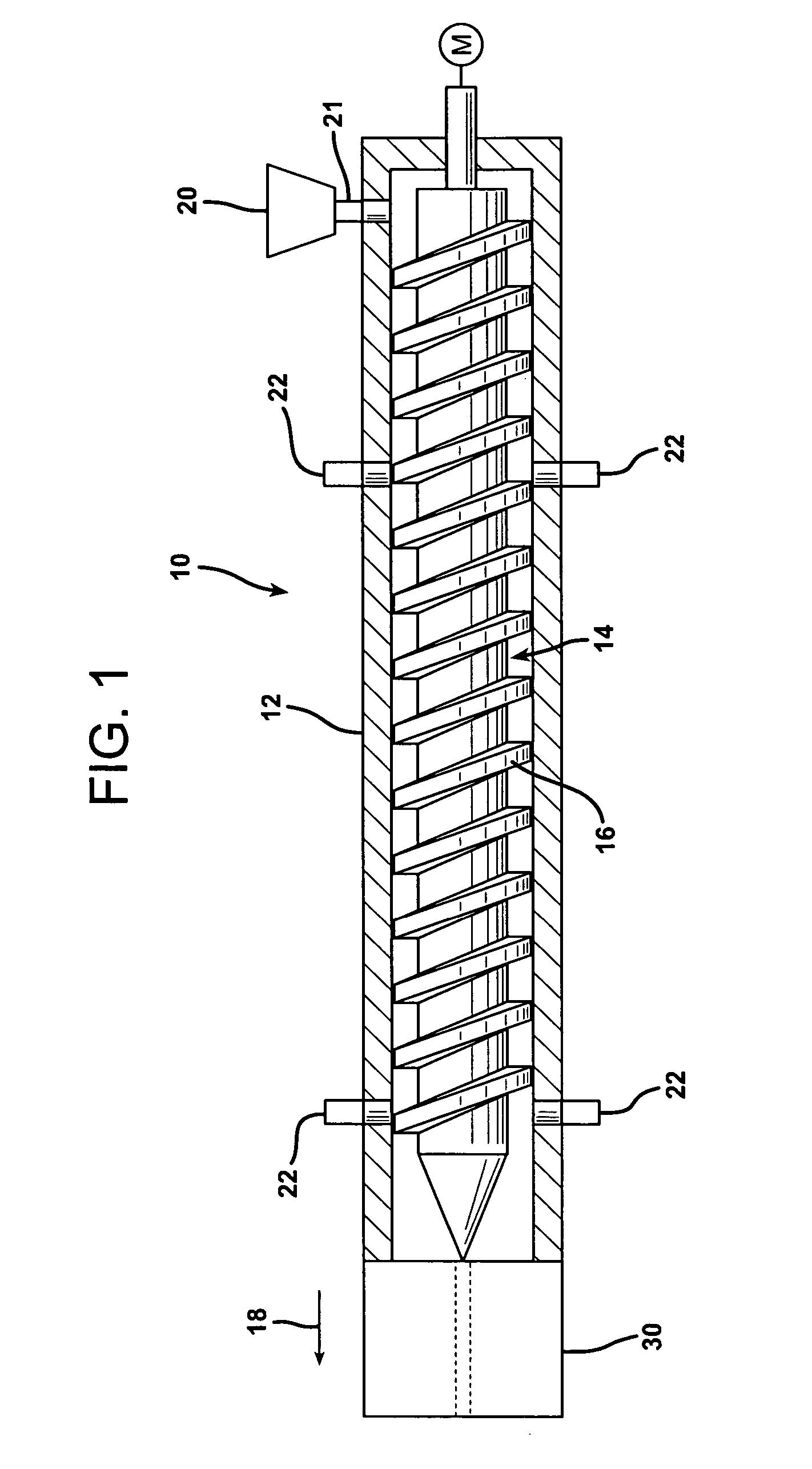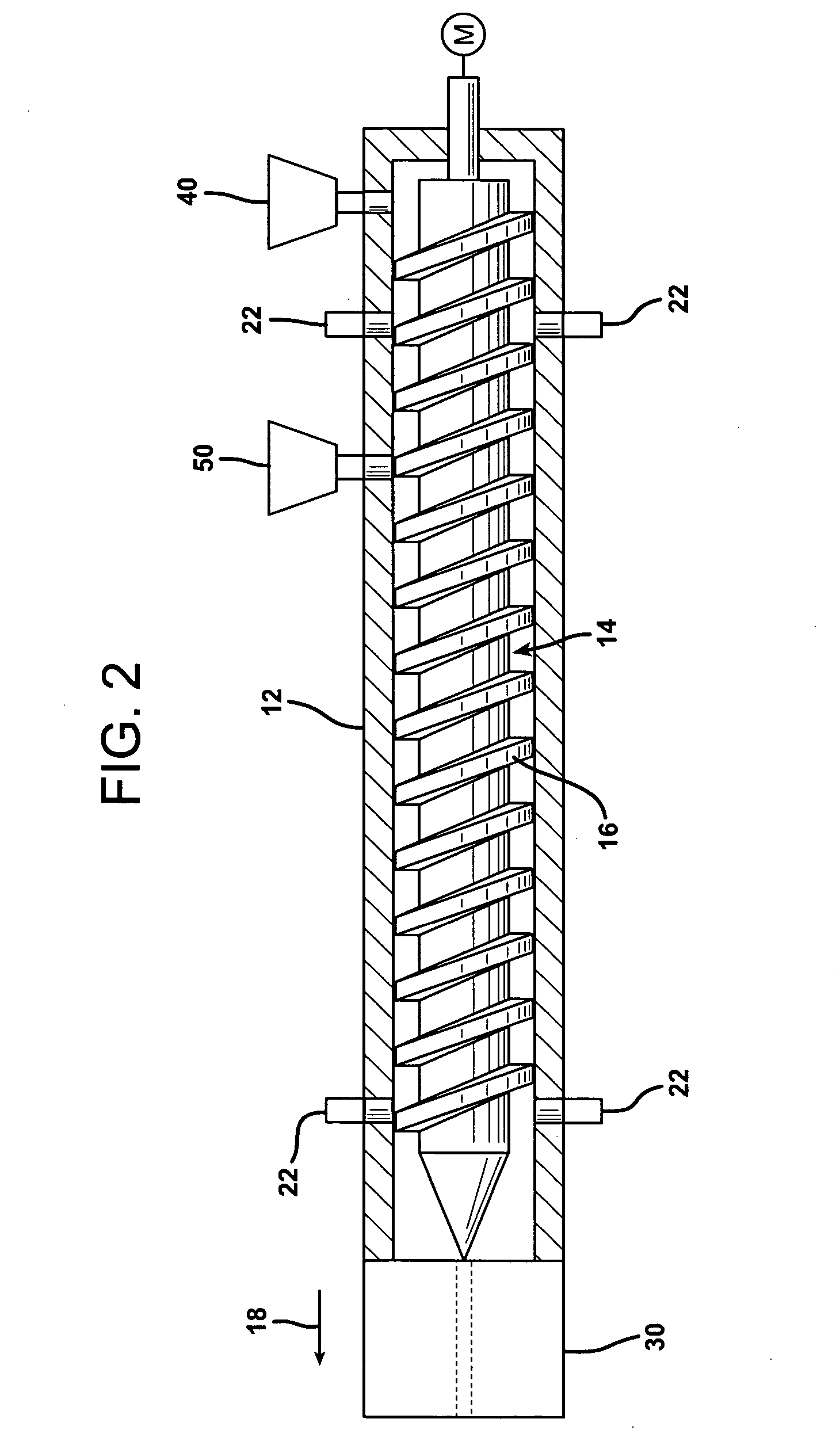Foamed reinforced composite siding product
a reinforced composite and foam technology, applied in the field of foam reinforced composite siding products, can solve the problems of siding warping or distending, not supporting combustion, unsightly appearance of the home, etc., and achieve the effects of reducing or even eliminating the effects of freeze/thaw, reducing or even eliminating the effect of freezing/thawing
- Summary
- Abstract
- Description
- Claims
- Application Information
AI Technical Summary
Benefits of technology
Problems solved by technology
Method used
Image
Examples
example 1
Comparison of Various Aspect Ratio Fillers in Inventive Resin Formulations
[0066] The resin formulations set forth in Tables 1-13 were prepared in blenders as described generally below. To prepare resin formulations A-M, the PVC resin and stabilizer (TM 186) were added to a pilot line high speed blender and mixed at high speed until the temperature reached approximately 150° F. At that time, the lubricants (Adva wax 280, A.C. 629a, and Dover Lube Ca 21) and processing aid (Paraloid K-400) were added and blended at high speed until the mixture reached approximately 170° F. The filler (e.g., diatomaceous earth, perlite, mica, wollastonite, mineral wool, and / or calcium carbonate, depending on the formulation desired) was added and the mixture was further blended at high speed to a temperature of about 210° F. The formulation was then transferred to a low intensity mixture and blended at low speed until the temperature reached approximately 150° F.
TABLE 1Resin Formulation A (diatomac...
example 2
Use of Glass Fibers, Calcium Carbonate and Talc Filler to Reduce Coefficient of Thermal Expansion
[0093] The resin formulations N-Q set forth in Tables 14-17 were prepared in blenders as described in Example 1 set forth above. In particular, the PVC resin and stabilizer (TM 186) were added to a high speed blender and mixed at high speed until the temperature reached approximately 150 ° F. At that time, the lubricants (Adva wax 280, A.C. 629a, and Dover Lube Ca 21) and processing aid (Paraloid K-400) were added and blended at high speed until the mixture reached approximately 170° F. The filler (i.e., precipitated calcium carbonate) was added and the mixture was further blended at high speed to a temperature of about 210° F. The formulation was then transferred to a low intensity mixture and blended at low speed until the temperature reached approximately 150° F.
TABLE 14Resin Formulation N% by WeightChemicalPPHof Active SolidsPVC Resin 216(a)10071.12Super-flex 1000(b)2517.78Paralo...
example 3
Low K-value Versus High K-value PVC Resins in Inventive Resin Formulations
[0102] The resin formulations set forth in Tables 18-20 were prepared in blenders as described above in Examples 1 and 2. In particular, the PVC resin (PVC Resin 216 or PVC Resin 5305 depending on the desired formulation) and stabilizer (TM 186) were added to a high speed blender and mixed at high speed until the temperature reached approximately 150° F. At that time, the lubricants (Adva wax 280, A.C. 629a, and Dover Lube Ca 21) and processing aid (Paraloid K-400) were added and blended at high speed until the mixture reached approximately 170° F. The filler (i.e., calcium carbonate) was added and the mixture was further blended at high speed to a temperature of about 210° F. The formulation was then transferred to a low intensity mixture and blended at low speed until the temperature reached approximately 150° F.
TABLE 18Resin Formulation R% by WeightChemicalPPHof Active SolidsPVC Resin 216(a)10071.12MV 6...
PUM
| Property | Measurement | Unit |
|---|---|---|
| density | aaaaa | aaaaa |
| wt. % | aaaaa | aaaaa |
| wt. % | aaaaa | aaaaa |
Abstract
Description
Claims
Application Information
 Login to View More
Login to View More - R&D
- Intellectual Property
- Life Sciences
- Materials
- Tech Scout
- Unparalleled Data Quality
- Higher Quality Content
- 60% Fewer Hallucinations
Browse by: Latest US Patents, China's latest patents, Technical Efficacy Thesaurus, Application Domain, Technology Topic, Popular Technical Reports.
© 2025 PatSnap. All rights reserved.Legal|Privacy policy|Modern Slavery Act Transparency Statement|Sitemap|About US| Contact US: help@patsnap.com



